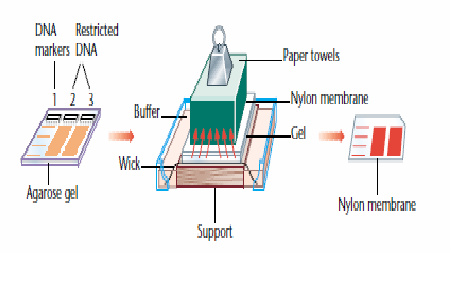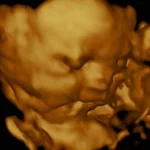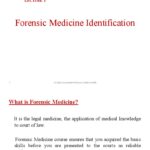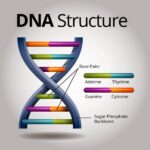Hybridization and blotting are molecular biology techniques inextricably linked, frequently appearing in tandem within research methodologies. However, understanding their distinct roles is crucial for comprehending the intricacies of gene analysis and expression studies. Many view them as similar, but a deeper dive reveals they address fundamentally different aspects of nucleic acid investigation. While blotting serves as a preparatory step, hybridization is the analytical lynchpin. Let’s elucidate these differences, shifting your perspective on their complementary yet separate functions.
Blotting: The Art of Nucleic Acid Transfer
Blotting, in essence, is a technique for transferring nucleic acids or proteins from a gel matrix to a solid support, typically a membrane. This immobilization step is indispensable. This allows for easier manipulation and subsequent analysis. The process typically follows electrophoretic separation. Electrophoresis separates molecules based on size and charge. It’s a critical preparation. This separation allows for the isolation and identification of specific molecules.
There are three primary types of blotting, each tailored to a specific class of biomolecule:
- Southern Blotting: Named after Edwin Southern, this technique focuses on DNA. After digestion with restriction enzymes, DNA fragments are separated by electrophoresis and transferred to a membrane. This creates a stable replica of the DNA fragments.
- Northern Blotting: This method targets RNA. Northern blotting is used to study gene expression patterns by analyzing RNA size and abundance. The steps are similar to Southern blotting. RNA is separated, transferred, and then probed.
- Western Blotting: Unlike the previous two, Western blotting is used to analyze proteins. Proteins are separated by electrophoresis, transferred to a membrane, and then detected using antibodies. It’s a powerful tool for studying protein expression and modification.
The membrane, typically composed of nitrocellulose or PVDF, provides a stable matrix for subsequent analysis. The blotting process ensures the molecules are accessible and bound to a solid support. This makes them amenable to probing and detection.
Hybridization: The Quest for Sequence Specificity
Hybridization, on the other hand, is a technique predicated on the principle of complementary base pairing. It involves annealing a labeled probe to a target sequence of nucleic acid. Think of it as molecular recognition. The probe, a single-stranded DNA or RNA molecule, is designed to be complementary to a specific sequence of interest. This is a targeted binding process.
The probe is labeled with a detectable marker. This allows visualization after hybridization. Radioactive isotopes were traditionally used. Now, fluorescent or enzymatic labels are more common. The hybridization process involves incubating the membrane containing the blotted nucleic acids with the labeled probe under specific conditions. Factors such as temperature, salt concentration, and pH are carefully controlled. These conditions optimize probe binding and minimize non-specific interactions.
Following incubation, the membrane is washed to remove unbound probe. Only the probe that has hybridized to its target sequence remains bound. The location of the bound probe reveals the presence and location of the target sequence.
Key Distinctions: Preparation vs. Analysis
The fundamental difference lies in their purpose. Blotting is primarily a preparative technique. It prepares the sample for analysis by transferring it to a more accessible and stable format. Hybridization is the analytical step. It uses a probe to identify and locate specific sequences within the blotted sample.
To illustrate:
- Blotting immobilizes nucleic acids or proteins. Hybridization detects specific sequences within those immobilized molecules.
- Blotting facilitates subsequent analysis. Hybridization provides the actual analytical data.
- Blotting doesn’t rely on sequence complementarity. Hybridization is entirely dependent on complementary base pairing.
Imagine blotting as preparing a canvas. Hybridization is painting a specific image on that canvas. The canvas (blotting) provides the platform, and the paint (hybridization) reveals the desired information.
A Synergistic Relationship: The Power of Combined Techniques
While distinct, blotting and hybridization often work in concert. For instance, in Southern blotting, DNA is first blotted onto a membrane. Then, a labeled probe is hybridized to detect a specific DNA sequence. The combined technique allows researchers to identify and characterize specific DNA fragments within a complex mixture. Similarly, Northern blotting followed by hybridization is used to study gene expression patterns. Western blotting followed by antibody probing allows for protein detection and quantification.
The strength of this combination lies in their sequential action. Blotting prepares the sample, while hybridization provides the specificity. This powerful combination allows researchers to dissect complex biological systems at the molecular level.
Beyond the Basics: Advanced Applications
These techniques have evolved significantly. Advanced applications now incorporate automation and multiplexing. For example, microarray technology utilizes miniaturized blotting and hybridization for high-throughput gene expression analysis. These advanced approaches enable researchers to analyze thousands of genes simultaneously. Next-generation sequencing technologies also leverage hybridization principles. These technologies allow for rapid and accurate sequencing of entire genomes.
In conclusion, while both hybridization and blotting are essential molecular biology techniques, they serve distinct roles. Blotting is a preparatory step, transferring molecules to a solid support. Hybridization is the analytical step, detecting specific sequences through complementary base pairing. Understanding their differences, and their synergistic relationship, is crucial for anyone working in the fields of genomics, proteomics, and molecular biology. This understanding promises not just clarity, but a profound shift in perspective, revealing the elegant logic underlying these powerful techniques.










Leave a Comment